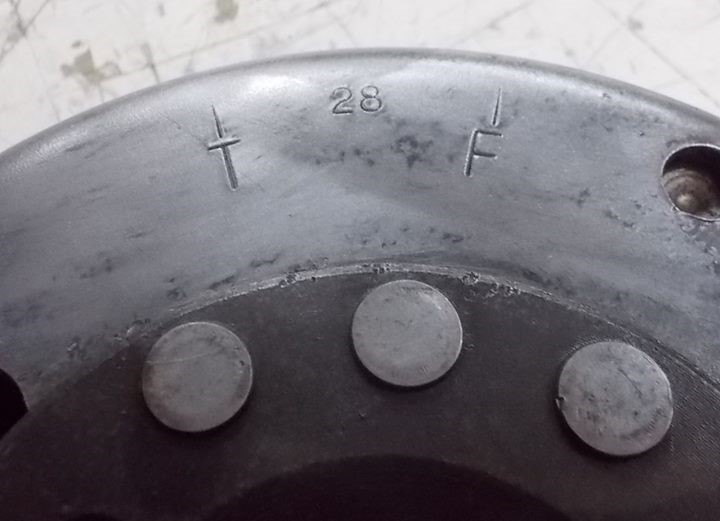All 440/550 engines came with one of 4 different flywheels … and the difference matters a lot. Three of those flywheels, we refer to as the “interchangeable riveted” flywheels used on all 440s and most 550s. Interchangeable means they all use the same stator, and riveted refers to magnets secured with rivets. Most 82-85 550s came with a “28 degree” riveted flywheel that offered firing at 28’ BTDC (stamped “28” by the T&F marks). The 86-94 550s came with a 21 degree flywheel (stamped “21”). All 440s came with a 25 degree flywheel that has NO number stamping between the T & F stamping marks.
Months of testing has shown that most recreational 440s/550s run best with 25’ timing. If you are running the unmarked 440 flywheel, the stock stator setting works great. If you have a 28’ flywheel, you should retard the stator (rotate it clockwise) 3mm from the stock mark on the stator. If you have a 21’ flywheel, you should advance the stator (rotate counter clockwise) 4mm from the stock mark on the stator.
We often see 550 backyard tuners (with stock timed 21’ flywheels) setting up motors with well over 200psi compression to get good low range punch. While they have good intentions, they are doing 2 wrongs to make a right. The excessively high compression is very abusive to the crank, and harms high rpm abilities. If they advanced their timing to 25’, they would be able to reduce compression to the 160-180 range and net the same level of overall acceleration. It a better setup because the big reduction in compression is much easier on the crank, reduces deto risks, and improves the engine’s high rpm abilities.
Conversely, we see guys with 28’ flywheels that are struggling with overheating and piston scoring issues. If these owners retard their timing 3mm, they will lose a microscopic amount of acceleration, but gain a big margin of cooler operating temps.
Race gas setups can accommodate a bit more timing advance … but not much. Most recreational 440/550s have peak rpms between 7000-7500 rpm. However the top race-gas 550s of the PJS days approached 9000rpm. In this rpm range, lots of advance is a bad thing, and 25’ timing offers a good mix of power and reliability. Race gas engines spinning in the 8000s will usually work best with 25’-26’ timing … a digital tach on glass water shows the differences.
The 4th flywheel is the 28 degree “non-interchangeable” glued magnet flywheels. These were made one year, and failed often (magnets flew off) … if you have one, replace it with a riveted flywheel/stator.
Winter is a good time to review your ignition setup.
.jpg.aspx)

By Harry Klemm